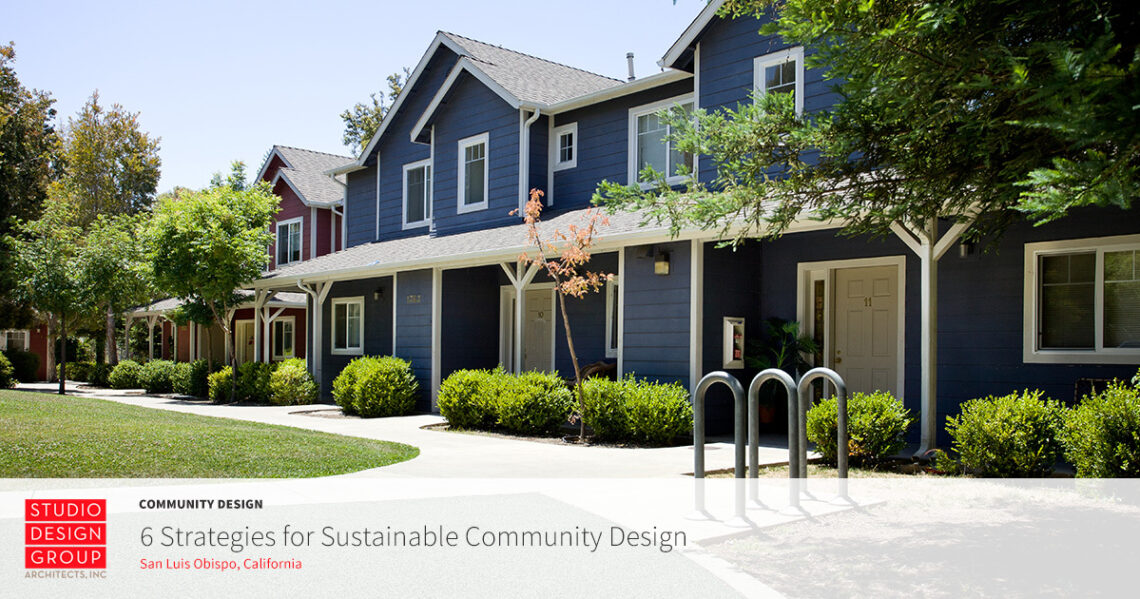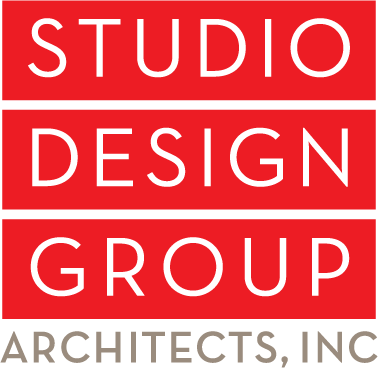
Huge advancements in the Green building industry have taken place in recent years, and here at Studio Design Group Architects, we are constantly searching for new ways to reduce the environmental impact of the spaces that we create. We are passionate about community design, and believe that careful planning and renewable materials can come together to create public spaces like schools and businesses, that allow us to work, learn and play in a responsible, sustainable way.
Consider these strategies for implementing environmentally responsible methods and materials into your new construction, retrofit, or remodel.
Passive Sustainable Design
Passive design principles are the more immutable elements of a project and include things like site orientation, window placement, insulation, landscape, and irrigation. When we work with the land and take advantage of the natural topography, it lets nature aid in the cooling, heating, lighting, and airflow of the space, and what could be more sustainable than having nature heat and power your school or business? But passive sustainable design can be more challenging with remodels and retrofits, so we depend on green technology and active design to keep energy costs down.
Active Sustainable Design
Active design elements include highly efficient mechanical and electrical systems such as updated plumbing and HVAC. When used along with other methods that produce cleaner, safer energy, they are a low-cost alternative to the inefficient systems of the past, and a practical choice for retrofits. Whenever possible, choose suppliers that responsibly source and distribute their products.
Green Building Materials
Using locally sourced, environmentally friendly materials whenever possible can help save money and the planet. Hempcrete, a hemp and lime-based insulating product, is a great example of advances in green building. It’s lightweight, affordable, and a greener upgrade to traditional building insulation. Rammed-earth, straw bale, and other thick-wall construction methods are also gaining in popularity because of their remarkable insulating properties.
Renewable Energy Systems
Anything that can transform natural sources such as wind and sun into usable energy can help save money and the planet. The most advanced technologies are used to create solar and wind power, but hydropower and geothermal energy systems are more efficient and accessible, too, and should also be considered in the planning stages of any community design project.
Indigenous Landscaping
The best way to create spaces that are practical, livable, and sustainable is to work with the characteristics of the land instead of against it. To create buildings that keep the future in mind, our architects are using native plants that require less water, putting inclines to work for irrigation and runoff, even strategically placing trees where they can provide shade and privacy.
Return on investment
While the upfront investment of using green technologies and materials may be slightly higher than in traditional building processes, the long-term benefits far outweigh the expense. Consider lower heating, cooling and water costs, the health benefits of fewer VOCs, not to mention the long-term effects on our environment.
New innovations in materials, methods, and technologies have made creating beautiful, sustainable homes, businesses, and communities more accessible than ever. Whether it’s new construction, remodel, or retrofit, we would love to discuss your project with you. Reach out to us here, or give us a call at 805-541-3848.
